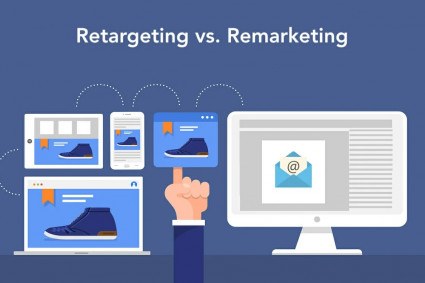
Unlock your business growth potential with digital marketing, contact Malaysia's top seo agency iMarketing is best for local seo Malaysia and international SEO.Contact them to find out how you can start generating more leads and sales for your business today, even when working from home.Contact iMarketing to get Real Results With their Digital Marketing Agency Over 10 years, iMarketing has helped companies reach their financial and branding goals.they are the best digital marketing agency specialising in Google SEO (Search Engine Optimisation), Google Ads and Google Display Network. iMarketing MY takes pride in collaborating with brands to transform their digital marketing strategy by putting forward creative solutions and designing world-class experiences for the clients. Each campaign is fine-tuned and tailored to each business’s specific needs with ROI-driven approaches to steer higher profit.
Introduction
Website speed has become an important component in determining a website's success in the digital era. In addition to improving user experience, a quick-loading website is essential for Search Engine Optimisation (SEO). Websites that load quickly are prioritised by search engines like Google because they want to offer their consumers the greatest experience possible. In this post, we'll look at the crucial actions you can do to speed up your website for improved SEO results.
1. Speed-test your website
It's critical to evaluate your website's existing speed performance before beginning optimisation strategies. You may examine your site's loading speed and pinpoint areas for improvement using a variety of internet tools like Google PageSpeed Insights, GTmetrix, and Pingdom. These resources offer insightful information about speed-affecting elements including server response time, image optimisation, and JavaScript rendering.
2. Select a Reputable Web Hosting Company
Selecting a trustworthy web hosting company is the first step in enhancing the speed of your website. A reputable hosting provider will make sure that your website is housed on fast servers with little downtime. Although shared hosting may be less expensive, it can have a substantial negative effect on your SEO results if your website frequently goes down or loads slowly because of shared server resources. To increase performance, think about upgrading to a VPS or dedicated hosting package.
3. Image optimisation and compression
Even though images are crucial for increasing user interaction, they can also significantly slow down your website. The time it takes for a page to load depends on how long it takes to load large picture files. Use programmes like TinyPNG or ShortPixel, which minimise file size without sacrificing quality, to compress photos for optimisation. Adopt responsive image approaches as well so that your website offers pictures that are the correct size for the user's device.
4. Make Browser Caching active
After a user's initial visit, browser caching enables browsers to keep website data, such as CSS, JavaScript, and pictures, on their device. The browser receives the cached information when the user returns to the website, eliminating the need to refresh the complete page. For repeat visitors, this means speedier load times. Set the proper expiry headers on your server or make use of plugins for well-known Content Management Systems (CMS), like WordPress, to allow browser caching.
5. Cut down on HTTP requests
The server must receive an HTTP request for each component of your website, including pictures, stylesheets, and scripts. Your website will take longer to load as more queries are made. integrate CSS and JavaScript files, streamline your website's appearance, and make as few HTTP queries as possible. You may bundle and minify your code with the aid of programmes like Gulp or Webpack, which will lessen the number of requests and the size of your files overall.
6. Improve JavaScript and CSS
The loading speed of your website might be greatly slowed down by large CSS and JavaScript files. By eliminating superfluous code, utilising CSS shorthand, and effectively organising stylesheets, you may improve your CSS. When loading JavaScript, think about employing asynchronous loading strategies so that the page may render right away. In this approach, even if some ancillary scripts take a little longer to load, your website will look quicker to users.
7. Put a Content Delivery Network (CDN) in place
A network of servers dispersed over several places is known as a content delivery network (CDN). The CDN provides material from the closest server when a user requests it from your website, lowering latency and speeding up load times. To guarantee quick and dependable content delivery, several well-known websites employ CDNs. Most websites may easily integrate with services like Cloudflare and Akamai, which also offer increased security benefits.
8. Switch on Gzip compression
Before being transferred to the user's browser, your website files can be compressed using gzip technology. With this method, bandwidth utilisation is greatly decreased, and loading times are accelerated. Gzip compression is simple to use because it is supported by the majority of current web servers and browsers. To activate Gzip compression for your website, check the settings on your server or with your hosting company.
9. Boost Web Fonts
Web fonts enhance the aesthetics of your website but can also slow down load speeds. Don't employ too many different font weights and styles on your website because doing so involves an extra HTTP request. Use self-hosted or web-safe fonts to lessen dependency on third-party font suppliers and boost speed.
10. Regularly check and test the speed of websites
Optimisation of website performance is a continuous activity. Utilise applications like GTmetrix and Google PageSpeed Insights to often check the performance of your website. To find any possible lags, test several sites and components. Your website will continuously offer a quick and easy user experience thanks to ongoing monitoring and changes, which will boost SEO performance.
Conclusion
Increasing the speed of your website is becoming a need for improved SEO performance and user pleasure in the cutthroat digital environment of today. You may speed up the loading of your website by performing a complete performance assessment, selecting a reputable hosting company, compressing and optimising pictures, activating browser cache, reducing HTTP requests, and utilising content delivery networks. By putting these tactics into practise, you'll improve user engagement and SEO rankings, giving your website a more successful and complete online presence.






